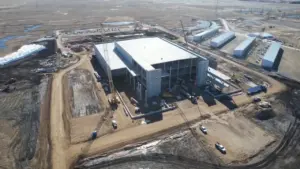As Legacy Payment Companies Lag Behind in Blockchain Adoption, What Will Keep Them Competitive in Web3?
Legacy payment companies aren’t at the forefront of new blockchain solutions, and all things considered are still pretty late to blockchain adoption, getting out-innovated by smaller, more nimble FinTech companies. However, we’re finally starting to see more holistic movement on web3 from the biggest players in the space, with some like MoneyGram gaining industry-wide recognition for its blockchain-based on/off-ramp digital wallets service. Where do the behemoths in the payments industry, like Visa and Mastercard, stand in terms of blockchain adoption? And how should they continue to move forward with solutions development in order to stay competitive in the web3 field?
Visa, for example, is charging ahead with its CBDC and protocols team to study and build solutions using blockchain technology for future payment systems. These include use cases like account abstraction and solutions for maneuvering 4337 paymaster contracts, as well as abstracting gas fees for users and enabling users to pay transaction fees using ERC-20 tokens. The company’s research is aiming to simplify transaction fees and enhance user experience. Mastercard is dipping its toes in the water, as well. Beyond a more public embrace of blockchain technology from Mastercard executives, the company isn’t just talking the talk; Mastercard is launching cryptocurrency credential services for safe cross-country asset transfers, as well as actively seeking more partnerships with crypto firms to expands it cryptocurrency payment card programs.
Though they’re indicating a willingness to evolve, legacy payment companies still have a lot of blockchain catching up to do. Where does it make most sense for them to place their research and resource energy to not only remain competitive, but further the mainstream adoption of blockchain services? Several cryptocurrency, blockchain and web3 experts weigh in with their take, including:
- Omid Malekan, the “Blockchain Explainer-in-Chief” and Adjunct Professor at the Columbia Business School
- Gabriella Kusz, CEO of the Global Digital Asset Cryptocurrency Association
- Peter Jensen, CEO of Rocketfuel Blockchain
Omid’s Thoughts
“Let’s start by addressing what incumbent payment providers shouldn’t do, which is to assume that the architecture of how money moves around the world will stay the same in the future, and that they should just look at blockchain as yet another tool that can help them improve what they already do. This is a mistake that incumbents often make, and frankly, if we look at the crypto experimentation that payment providers and credit card companies have already done, they almost entirely fall into that bucket.
The right way to address this is to start with a blank slate and the assumption that in the future, this technology will allow anybody to have a digital wallet and for any asset, including money, to be tokenized, and that people will be able to make peer-to-peer payments in a fashion that they are unable to make today. And then to ask the question, in that world, what services could a company that has a lot of experience in payments and that has certain licenses and the trust of their consumers provide that makes that innovative future state better yet? Of course, all of this assumes that incumbents are okay dealing with the possibility that they might get disrupted, but as the old saying goes, if they don’t accept that reality, then their competition surely will.”
Gabriella’s Thoughts
“One area that legacy payment systems may want to amplify is the UX and UI that retail consumers experience when they’re engaging in the digital asset space. To this day, many digitally native firms still lack and have very clunky UX, UI, or user interfaces, user experiences, which makes it difficult to achieve mainstreaming. Seamlessly integrating into the already elegantly created interfaces and experiences that legacy payment systems have created for their consumers would be a great and easy way to try to engage, encourage, and to lead in mainstream adoption in digital asset and blockchain technology.”
Peter’s Thoughts
“I often get asked, what can established legacy payment providers do to ensure that they do not get disrupted by blockchain and crypto technologies? And after 25 years in Silicon Valley, my prediction is that history will repeat itself. The legacy companies will move too slow and they’ll end up trying to catch up and buy smaller companies that innovate much faster than them. There are several reasons for this. On the technology side, they limit themselves by the existing technology frameworks that they want to fit everything into. On the business side, they are afraid of adjusting or maybe even cannibalizing their business models. And then the employees are often set in their existing ways of thinking about technology and solutions.
So my recommendation is create a number of small teams, experiment, learn and build new competencies. Give them the freedom to innovate, experiment and create the right solutions fast and without the existing constraints that we just talked about. They’ll likely not get it right the first time, but then you can learn from that and then you can determine how to best adopt and adapt what you learn and modernize your existing solutions. And then finally, maybe consider adding fresh external knowledge by partnering up with smaller companies and learn from them as well.”
Article written by Daniel Litwin.





